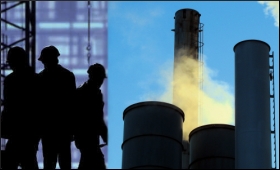|

|
Factory output growth slows to 3.6 pc in Feb
|
|

|
|
| Top Stories |
 |
|
|
|
SME Times News Bureau | 11 Apr, 2011
Industrial output grew by a lower than expected 3.6 percent in February, bogged down by slow production in the manufacturing sector, particularly capital goods, according to official data released Monday.
The index of industrial production (IIP), the barometer of the output of various sectors like manufacturing, stood at 7.8 percent for the April-February period of 2010-11, according to the data released by the Planning Commission here.
Industrial output grew by 15.6 percent in February 2010, although it was in comparison to a lower base.
Manufacturing output, which constitutes a majority of the IIP, rose by 3.5 percent in February, while mining and electricity sectors grew by 0.6 and 6.7 percent respectively.
"General anticipation was that overall growth will be around 4-6 percent instead of 3.6 percent. Capital goods have consistently under-performed since December 2010 and seems to be a major cause in bringing the general index numbers down. Some other factors are high input prices and credit availability," said Anis Chakravarty, director, Deloitte.
"Given the high interest rates currently prevailing, this trend of sluggish growth may persist for the next couple of months," he added.
During the month, capital goods showed the most negative growth, falling by 18.4 percent.
Important items registering high negative growth included insulated cables (-82.6 percent), hydraulic machines (-42.1 percent), electric motors (-37.9 percent).
Fifteen out of the 17 industry groups, however, showed positive growth during the month under review.
"The two areas of great concern to us are moderation in the growth of mining sector over the last few months and also the continuous negative growth of the capital goods sector for three months," said Rajiv Kumar, director general of the Federation of Indian Chambers of Commerce and Industry (FICCI).
The Reserve Bank of India has been consistently increasing interest rates to combat high inflation -- something that corporates and economists said will not help in dealing with the problem in the long-run and will only end up adversely affecting the industry.
"Continued reliance on monetary policy instruments for tackling inflation is bound to have an adverse impact on the industrial sector as it will weaken the investment momentum," said Kumar.
|
SEE ALSO
|
| |
|
|
|
|
|
|
|
|
|
|
|
|
|
|
| |
| Customs Exchange Rates |
| Currency |
Import |
Export |
US Dollar
|
₹88.70
|
₹87 |
UK Pound
|
₹119.90
|
₹116 |
Euro
|
₹104.25
|
₹100.65 |
| Japanese
Yen |
₹59.20 |
₹57.30 |
| As on 30 Oct, 2025 |
|
|
| Daily Poll |
 |
 |
| Who do you think will benefit more from the India - UK FTA in the long run?
|
|
|
|
|
|
| Commented Stories |
 |
|
|
|
|
|
| |
|